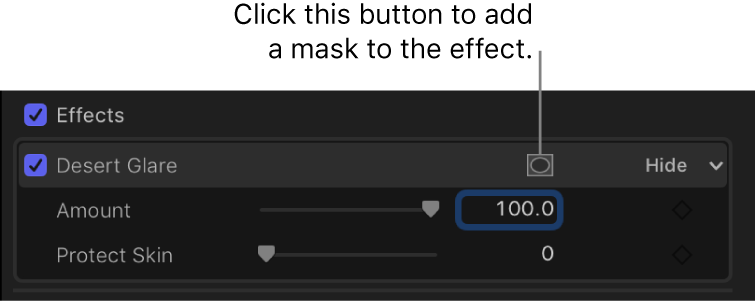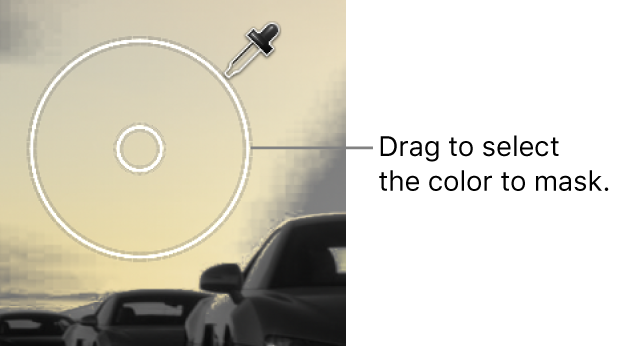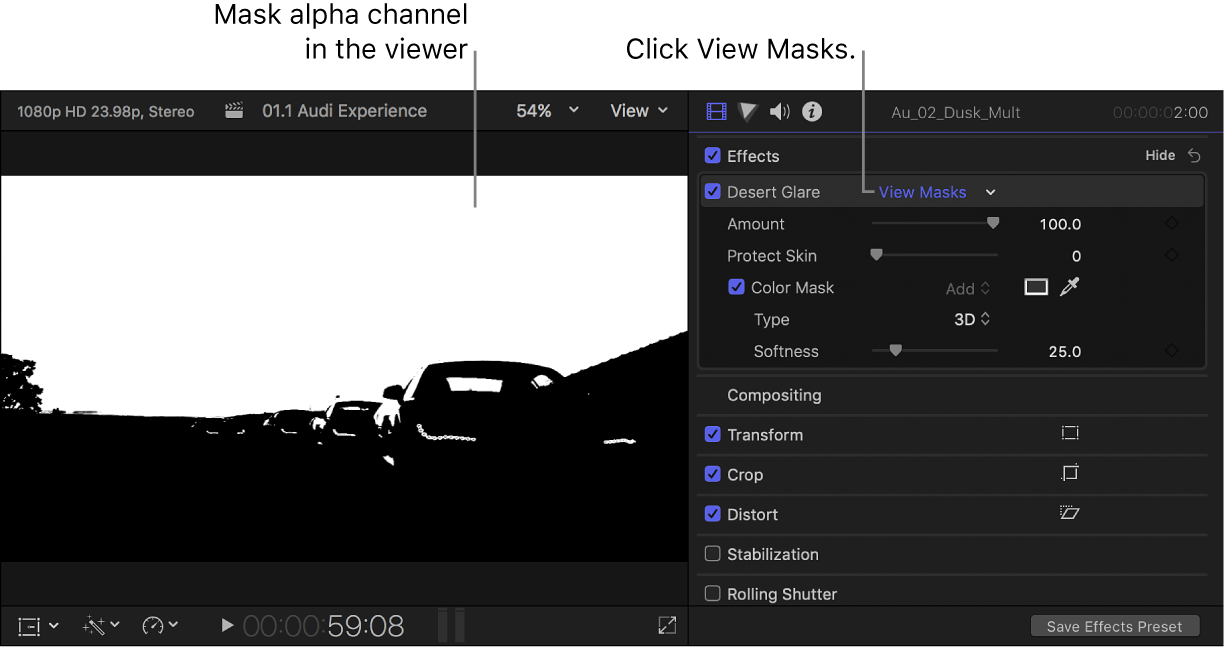Final Cut Pro User Guide
- Welcome
-
- What’s new in Final Cut Pro 10.6
- What’s new in Final Cut Pro 10.5.3
- What’s new in Final Cut Pro 10.5
- What’s new in Final Cut Pro 10.4.9
- What’s new in Final Cut Pro 10.4.7
- What’s new in Final Cut Pro 10.4.6
- What’s new in Final Cut Pro 10.4.4
- What’s new in Final Cut Pro 10.4.1
- What’s new in Final Cut Pro 10.4
- What’s new in Final Cut Pro 10.3
- What’s new in Final Cut Pro 10.2
- What’s new in Final Cut Pro 10.1.2
- What’s new in Final Cut Pro 10.1
- What’s new in Final Cut Pro 10.0.6
- What’s new in Final Cut Pro 10.0.3
- What’s new in Final Cut Pro 10.0.1
-
- Intro to effects
-
- Intro to transitions
- How transitions are created
- Add transitions
- Set the default transition
- Delete transitions
- Adjust transitions in the timeline
- Adjust transitions in the inspector and viewer
- Merge jump cuts with the Flow transition
- Adjust transitions with multiple images
- Modify transitions in Motion
-
- Add storylines
- Use the precision editor
- Conform frame sizes and rates
- Use XML to transfer projects
-
- Glossary
- Copyright

Add a color mask to a video effect in Final Cut Pro
You can create a color mask to apply a video effect, including a color correction, to a particular color in an image, or to exclude a color from the effect.
For example, you could use a color mask to mute a bright color in the background that distracts attention from a shot’s main subject.
Add a clip to your Final Cut Pro project, and select the clip in the timeline.
Position the playhead in the timeline so that your clip appears in the viewer.
Add an effect to the timeline clip from the Effects browser.
Note: This includes the color correction effects, which you can apply from the Color category of the Effects browser or from the Color inspector. See Add color corrections in Final Cut Pro.
To open the Video inspector, choose Window > Show in Workspace > Inspector (or press Command-4).

In the Effects section of the Video inspector, move the pointer over the effect name and click the Apply Effect Masks button
 .
.
Click the pop-up menu that appears and choose Add Color Mask.
The Color Mask parameter appears in the same section of the Video inspector, and the pointer changes to the eyedropper tool.
In the viewer, position the eyedropper on a color in the image that you want to isolate, then drag to select the color.

As you drag, two concentric circles appear. The size of the outer circle determines the range of color that is included in the color mask. As you change the outer circle size, the image becomes monochrome except for the color you’re selecting. You can drag a new selection circle as many times as you like to try for better results.
Note: When you stop dragging, the effect is applied to the area you selected. If you applied a color correction, you’ll see the effects of the color mask as soon as you start making adjustments in the Color Board. You can then return to the Video inspector and use the eyedropper to make any adjustments to the color mask.
To change the range of color included in the mask, do any of the following:
Add color shades: Hold down the Shift key, position the eyedropper on a color you want to add to the mask, and drag to select the color.
Subtract color shades: Hold down the Option key, position the eyedropper on a color you want to remove from the mask, and drag to select the color.
To adjust the color mask edges, drag the Softness slider.
Tip: To view the mask alpha channel while adjusting the Softness slider, hold down the Command key.
Do one of the following:
View the mask’s alpha channel: Click the View Masks pop-up menu and choose Black and White.
The mask’s alpha channel appears in the viewer. White indicates fully opaque mask areas, black indicates areas outside the mask, and levels of gray indicate transparent mask areas.
View the colors inside the mask: Click the View Masks pop-up menu and choose Color.
The colors inside the mask appear in the viewer. Gray indicates areas outside the mask.
Whether you’re viewing the mask alpha channel or the colors inside the mask, you can quickly return to the adjusted image by clicking View Masks.

Download this guide: Apple Books | PDF